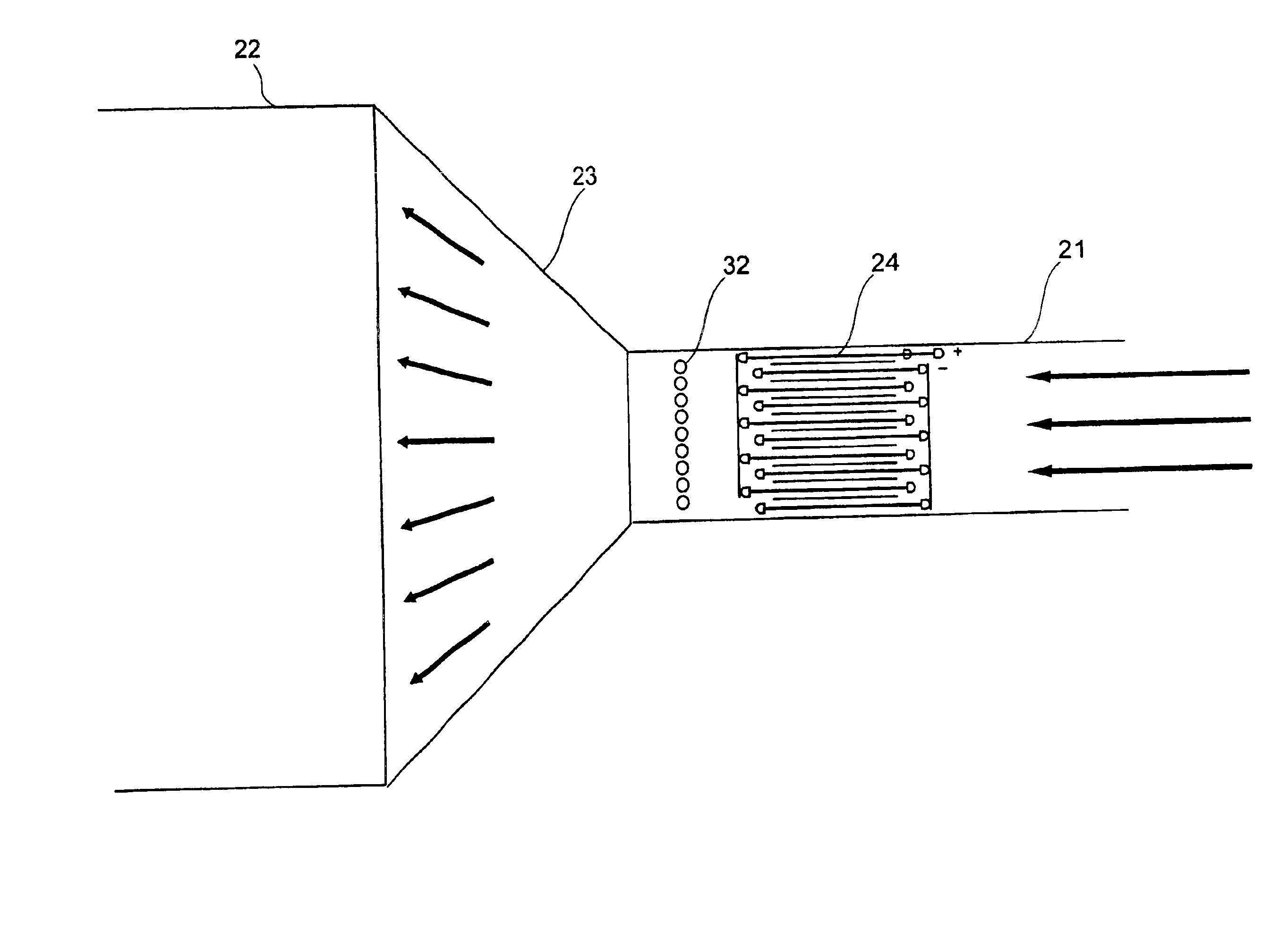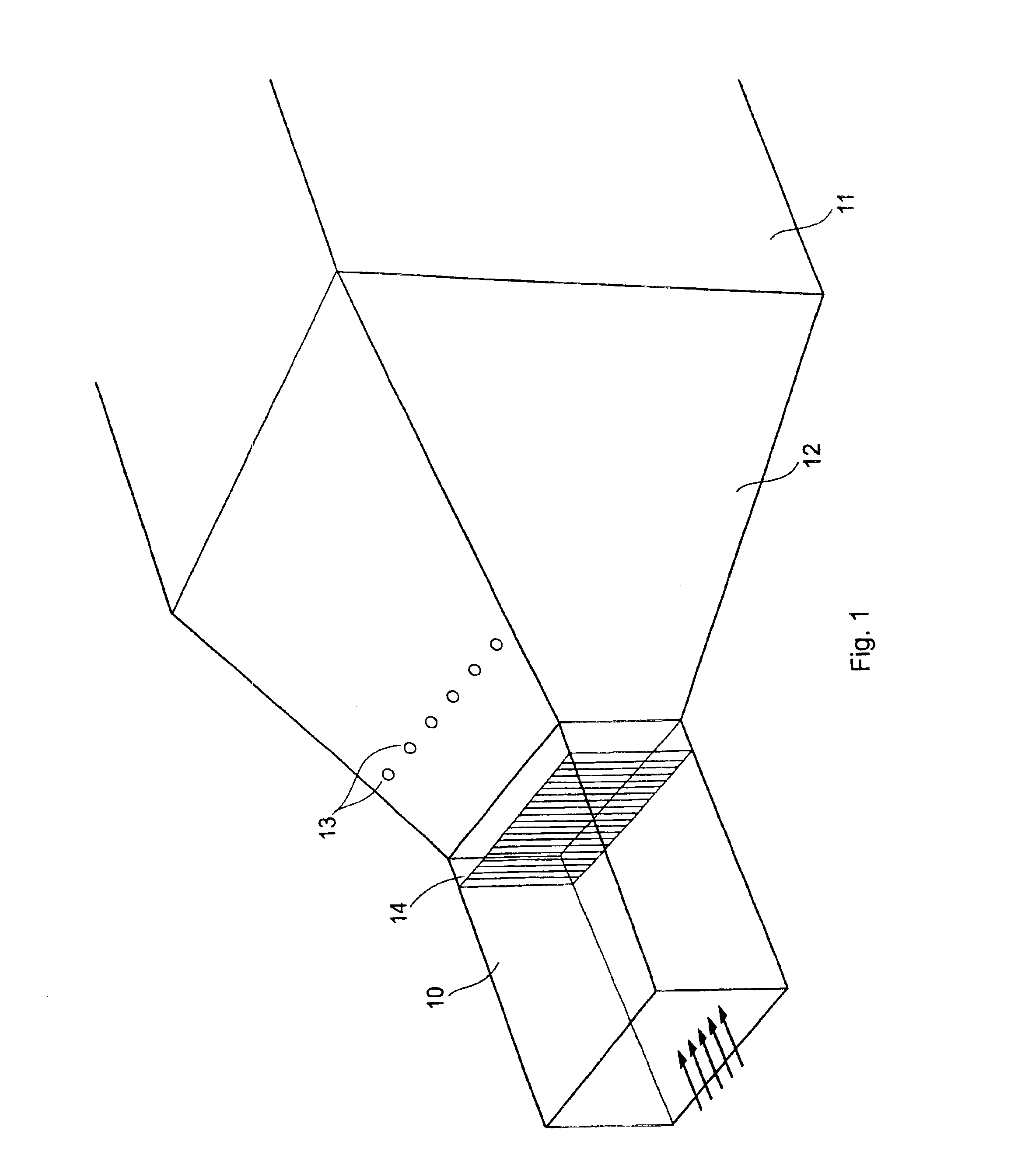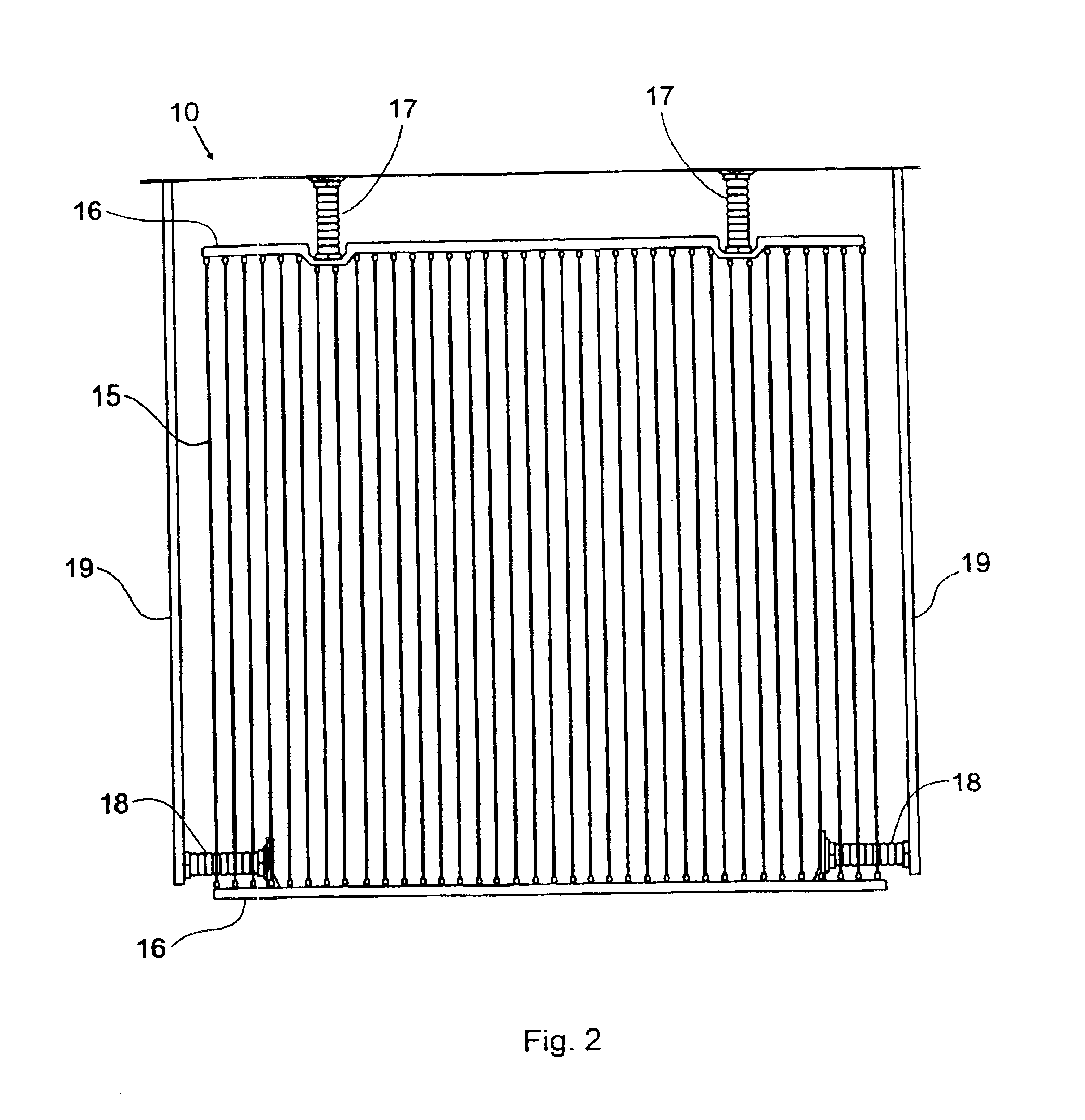Method and apparatus for particle agglomeration
a particle agglomeration and particle technology, applied in the direction of electric supply techniques, séparation processes, auxillary pretreatment, etc., can solve the problems of inefficiency of techniques, and achieve the effect of increasing the adhesion of charged particles and enhancing the mixing of charged particles
- Summary
- Abstract
- Description
- Claims
- Application Information
AI Technical Summary
Benefits of technology
Problems solved by technology
Method used
Image
Examples
first embodiment
[0041]FIGS. 1-3 illustrate the particle agglomeration apparatus of this invention. In this embodiment, precharged particles of different sizes in an airstream are caused to have differential speeds so as to promote mixing of the particles in the longitudinal direction of motion. The enhanced mixing results in agglomeration of the particles.
[0042]As shown in FIG. 1, a duct 10 of substantially constant cross section is connected to a second duct 11 having a substantially constant cross section which is significantly greater than the cross section of duct 10. The duct 10 is connected to the duct 11 by an Evasé portion 12 which has a progressively increasing cross section. The ducting 10, 11, 12 provides a conduit for a gas stream.
[0043]An AC ioniser 14 is located in the duct 10 to charge the particles in the gas stream. The AC ioniser 14, which is shown schematically in block form in FIG. 1, is shown in more detail in FIG. 2. The AC ioniser 14 comprises a series of spaced electrodes 15...
second embodiment
[0057]the invention is illustrated in FIGS. 5 to 9. In this embodiment, the gas stream containing the dust particles and other pollutants is divided into a series of parallel substreams which are passed through a bipolar charger so that the particles in adjacent substreams are charged to opposite polarity. The substreams are then deflected to cause adjacent substreams to merge and / or cross, thereby promoting mixing of the particles and enhancing agglomeration. That is, as the substreams merge or cross, oppositely charged particles will come into close proximity and will be attracted to each other. Consequently, they agglomerate into larger particles which can be filtered more easily from the gas stream subsequently, using known techniques.
[0058]As shown in FIG. 5, a duct 21 receives a high velocity flow of gas containing dust particles and other contaminants, in the direction shown by the arrows. The duct 21 may be connected to a larger duct 22 via an Evasé portion 23, in order to s...
PUM
| Property | Measurement | Unit |
|---|---|---|
| Flow rate | aaaaa | aaaaa |
| Polarity | aaaaa | aaaaa |
| Size | aaaaa | aaaaa |
Abstract
Description
Claims
Application Information
 Login to View More
Login to View More - R&D
- Intellectual Property
- Life Sciences
- Materials
- Tech Scout
- Unparalleled Data Quality
- Higher Quality Content
- 60% Fewer Hallucinations
Browse by: Latest US Patents, China's latest patents, Technical Efficacy Thesaurus, Application Domain, Technology Topic, Popular Technical Reports.
© 2025 PatSnap. All rights reserved.Legal|Privacy policy|Modern Slavery Act Transparency Statement|Sitemap|About US| Contact US: help@patsnap.com



